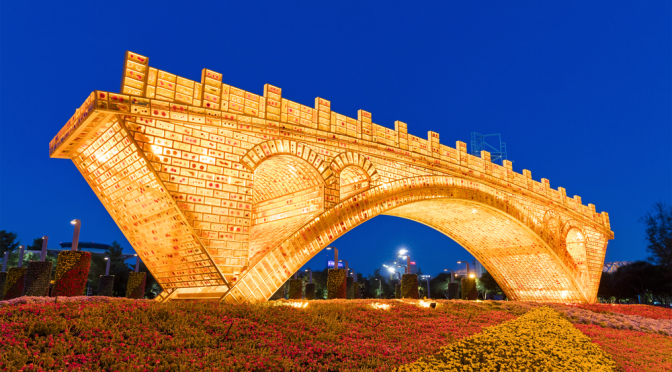China’s Belt and Road Initiative revives history for modern trade, development and renewable energy across Asia
Stretching thousands of kilometres, across mountains and deserts, the Silk Road holds a special place in history. Traversed by Marco Polo and named after one of its most precious goods, the trade route facilitated an exchange of ideas, technology, and animals between East and West, Asia, Europe and Africa. Though its relevance waned with the opening of sea routes between Asia and Europe, the rebirth of China’s economic power and ambitions over the last decade has rejuvenated the once dormant route.
No longer a winding caravan trail, China’s new Belt and Road Initiative aims to interconnect and bring development, stability, and resource security across 60 countries. At the centre of powering this economic ambition is renewable energy.
“China is at the forefront of the energy revolution. Thanks to its long-term policy framework and its huge manufacturing capacity, China has become the principal market for renewable energy worldwide,” said IRENA Director-General Adnan Z. Amin, during the Infrastructure Connectivity session of the Belt and Road Forum for International Cooperation. He was among 70 international organisation heads and 30 heads of state at the two-day gathering that took place in Beijing, China, on 14 and 15 May 2017.
Speaking about the Belt and Road Initiative’s potential to boost the transition to renewable energy and push global energy development into a new phase, Mr Amin said, “The Initiative can not only help to interconnect electricity grids and deploy more renewable energy, but it can also expand electricity markets to countries with extremely high renewable energy potential, including those in Central Asia. China has the technology and the resources, and it can help to achieve these goals by building partnerships and cooperation.”
One Road, One Belt
Introduced in 2013, the Belt and Road Initiative is a pan-regional co-operation framework that facilitates implementing existing infrastructure projects, and initiates new projects. The initiative combines China’s different foreign and domestic policies with existing and new political and financial cooperation mechanisms, to prioritise thematic areas of cooperation, including energy infrastructure development.
“As the energy transition progresses, power grid infrastructure interconnections will be key to facilitate larger and flexible electricity markets that can integrate higher shares of variable renewable energy. As much as 2,000 GW of interconnection capacity will be required by 2050 in order for enough renewables to be deployed to meet the objectives of the Paris Agreement,” the Director-General told the plenary.
“The Belt-and-Road Initiative can provide a promising platform to help meet the need for infrastructural interconnections between countries, particularly if it has greater focus on low-carbon growth and sustainable energy,” the Director-General added.
To meet its aims, the Initiative established the Silk Road Fund. With investments totaling USD 40 billion from the Chinese government and banks, the Fund provides medium to long-term investment in development, primarily through equity investment, to support infrastructure, resources and energy development, industrial capacity co-operation, and financial co-operation in countries and regions involved in the Initiative.
Planning to power
In Central Asia, China has developed a pipeline of renewable energy projects focusing on hydropower, solar, wind and biomass energy, and has been active in the strategic planning and preparations of projects. The country is also looking beyond Asia, and has been investing in African renewables and collaborating with Middle East developers to achieve record low prices for solar energy. These development partnerships are exemplified in Egypt, where a Chinese renewable energy company has committed to build a one gigawatt solar PV project and a factory for silicon solar panels.
“The scale of such undertakings requires careful, long-term planning and financing. Grids must not only be connected, but must integrate technologies that allow for flexibility, distributed generation and smart management, and must be laid out to allow access for areas rich in renewable energy resources. At the same time, markets and business models must adapt,” Mr Amin said.










